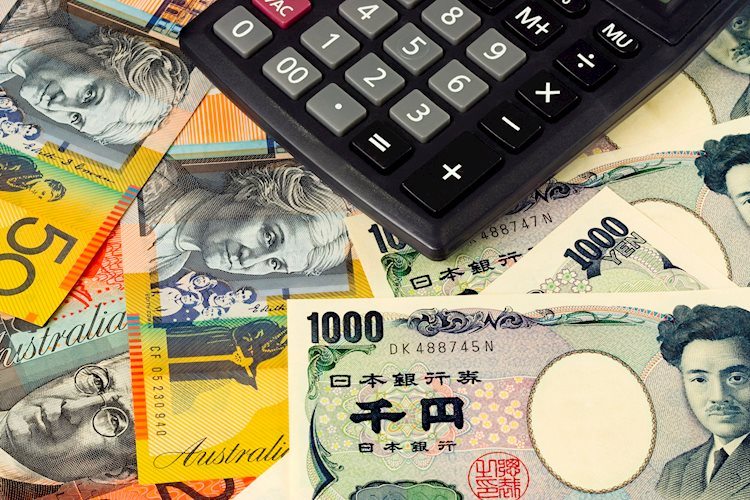AUD/JPY is experiencing a decline as the Japanese Yen strengthens due to hawkish sentiments surrounding the Bank of Japan. The improved second-quarter GDP data from Japan has raised expectations of an interest rate hike by the BoJ in the near future. In addition, Japan’s Machinery Orders have exceeded expectations, indicating a positive outlook for the Japanese economy. Moreover, safe-haven flows amid rising geopolitical tensions, such as those between Hamas and Israel, have also bolstered the Japanese Yen.
Despite the downward trend of AUD/JPY, the currency cross may find some support due to the risk-on sentiment prevailing in the market. The Reserve Bank of Australia (RBA) has adopted a hawkish stance towards its monetary policy outlook, with Governor Michele Bullock stating that there are potential upside risks to inflation and ruling out rate cuts in the short term. Investors are awaiting the RBA Meeting Minutes and the People’s Bank of China’s Interest Rate Decision for further guidance on the direction of these currencies.
Understanding the concept of risk sentiment in the financial markets is crucial in analyzing the movements of various assets. In a “risk-on” market, investors are optimistic about the future and more willing to take risks, leading to the appreciation of riskier assets. On the other hand, in a “risk-off” market, investors become more cautious and prefer safer assets, resulting in a decline in riskier assets. Stocks, commodities, and currencies tend to react differently based on the prevailing risk sentiment.
During periods of “risk-on,” stock markets tend to rise, commodities, excluding Gold, gain value, and currencies of commodity-exporting nations strengthen. On the other hand, in a “risk-off” market, Bonds, Gold, and safe-haven currencies like the Japanese Yen, Swiss Franc, and US Dollar tend to perform well. Major currencies such as the Australian Dollar, Canadian Dollar, and New Zealand Dollar are positively impacted during “risk-on” periods due to their reliance on commodity exports for economic growth.
The US Dollar, Japanese Yen, and Swiss Franc are considered safe-haven currencies that tend to rise during times of “risk-off.” The US Dollar is favored by investors during crises as they seek the safety of US government debt. Similarly, the Japanese Yen experiences increased demand as a result of its government bonds being held by domestic investors who are less likely to sell them during a crisis. The Swiss Franc benefits from the strict banking laws in Switzerland that offer enhanced capital protection to investors.
In conclusion, the AUD/JPY currency cross is currently experiencing a decline driven by the strengthening of the Japanese Yen due to hawkish sentiments surrounding the Bank of Japan. However, the risk-on mood in the market and the hawkish stance of the Reserve Bank of Australia could provide some support to the currency cross in the near term. Understanding risk sentiment is essential for investors to navigate the complexities of the financial markets and make informed decisions based on the prevailing market conditions.











